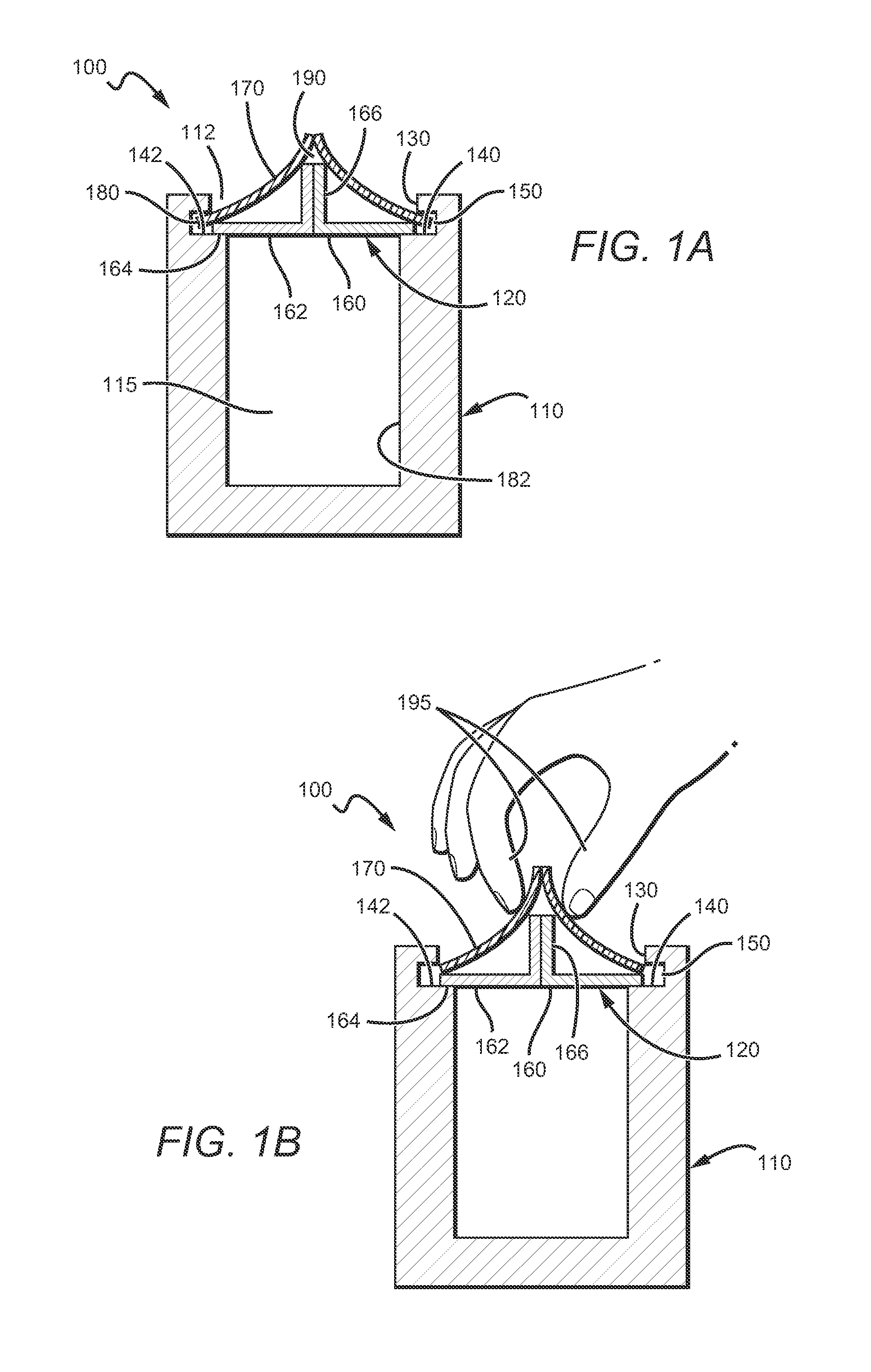Pinch top closure system
a top closure and closure technology, applied in the field of closure systems, can solve the problems of requiring significant cost for its decomposition, specialized processes and facilities for degradation, and plastics typically have an extremely slow rate of decomposition
- Summary
- Abstract
- Description
- Claims
- Application Information
AI Technical Summary
Benefits of technology
Problems solved by technology
Method used
Image
Examples
Embodiment Construction
[0016]In FIGS. 1A-1B, a closure system 100 is shown having a container 110 and a plug 120. Preferably, the container 110 defines a lumen 115 and is composed of fibrous materials that have been molded, or paper that has been formed into a tubular or other commercially suitable shape. Plug 120 is configured to effectively seal container 110 and thereby seal the lumen 115. Both the container 110 and plug 120 are preferably impervious to liquid and may have a coating 182. Additionally, it is contemplated that closure system 100 and its components can be made of other biodegradable materials including, for example, potato starch, potato flour, corn starch, cereal flour, soybean oil, cellulose, polylactic acid polymers (PLA), polyalkanoate acid (PHA), or petrochemical derivatives. The plug 120 advantageously allows the closure system 100 to be repeatedly reused without deformation of the container 110 or plug 120.
[0017]As used herein the term “fibrous material” means a plurality of discre...
PUM
| Property | Measurement | Unit |
|---|---|---|
| diameter | aaaaa | aaaaa |
| diameter | aaaaa | aaaaa |
| width | aaaaa | aaaaa |
Abstract
Description
Claims
Application Information
 Login to View More
Login to View More - R&D
- Intellectual Property
- Life Sciences
- Materials
- Tech Scout
- Unparalleled Data Quality
- Higher Quality Content
- 60% Fewer Hallucinations
Browse by: Latest US Patents, China's latest patents, Technical Efficacy Thesaurus, Application Domain, Technology Topic, Popular Technical Reports.
© 2025 PatSnap. All rights reserved.Legal|Privacy policy|Modern Slavery Act Transparency Statement|Sitemap|About US| Contact US: help@patsnap.com



